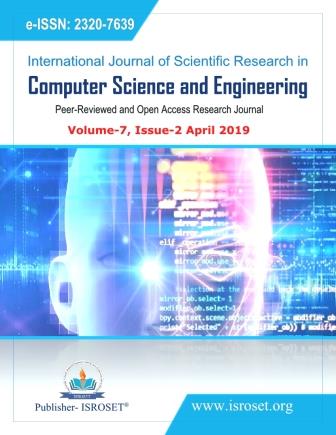Comparative Study on Various Techniques Used in Examination System: A Survey
Keywords:
Examination system, VIVA, Server, .netAbstract
In the field of academics one of the most popular and important assessment processes is the process of Examination. This system of Education started long way back. Even today, after multiple changes in the traditional method of assessment, there exists little effect in the method of teaching, learning and specially assessment which is the evaluation technique. This paper presents a comparative study on various techniques and tool that exists and is being used widely. It also studies the effectiveness of one technique over another and identifies required changes one need to bring about in the current method of our Examination system. The comparative study made between various database systems based on varied matrices also highlights the usage of one technique over another in varied environment.
References
Vamsi Krishna Yepuri, Gopi Chand Pamu, Naveen Kodali, Pradyumna L, Examination Management Automation System.
Prof.Sejal Dmello, Ashraf Pinjari, Harishchandra Damre, Aishwarya Sankhe, Vrushali Ambre, Exam Cell Automation System.
S. S. Kadam & Prof. M. A. Sutar, A review paper on Management Information Systems.
Monika Dhembare, Archana Gorad, Prof. S. H. Darekar, Automated Exam Cell with Result Analysis.
Shaikh Mohammed Sohail, Maqsood Ulde, Saqlain Kali3 & Er. Fatima Ansari, Implementing an Automated System for Exam Cell Department.
S. PriyaDharshini, M. SelvaSudha, Mrs. V. Anithalakshmi, Exam Cell Automation System.
Harsha Khutafale, Hardika Mate, Vaishnavi Sabnawis, Prof. Nilesh Patil, XamClick- Exam Cell Automation System.
Bijoy Chettri, Sanjay Kr. Prasad, Bhibak Sharma, Nishal manger, Zarmit Lepcha, Accessing a portion of MIS: Result Management System.
G.Sunitha, Dr.A.Jaya, A Knowledge Based Approach for Automatic Database Normalization.
Angitha Saju, An integrated Solution for Examination Management.
Downloads
Published
How to Cite
Issue
Section
License

This work is licensed under a Creative Commons Attribution 4.0 International License.
Authors contributing to this journal agree to publish their articles under the Creative Commons Attribution 4.0 International License, allowing third parties to share their work (copy, distribute, transmit) and to adapt it, under the condition that the authors are given credit and that in the event of reuse or distribution, the terms of this license are made clear.







